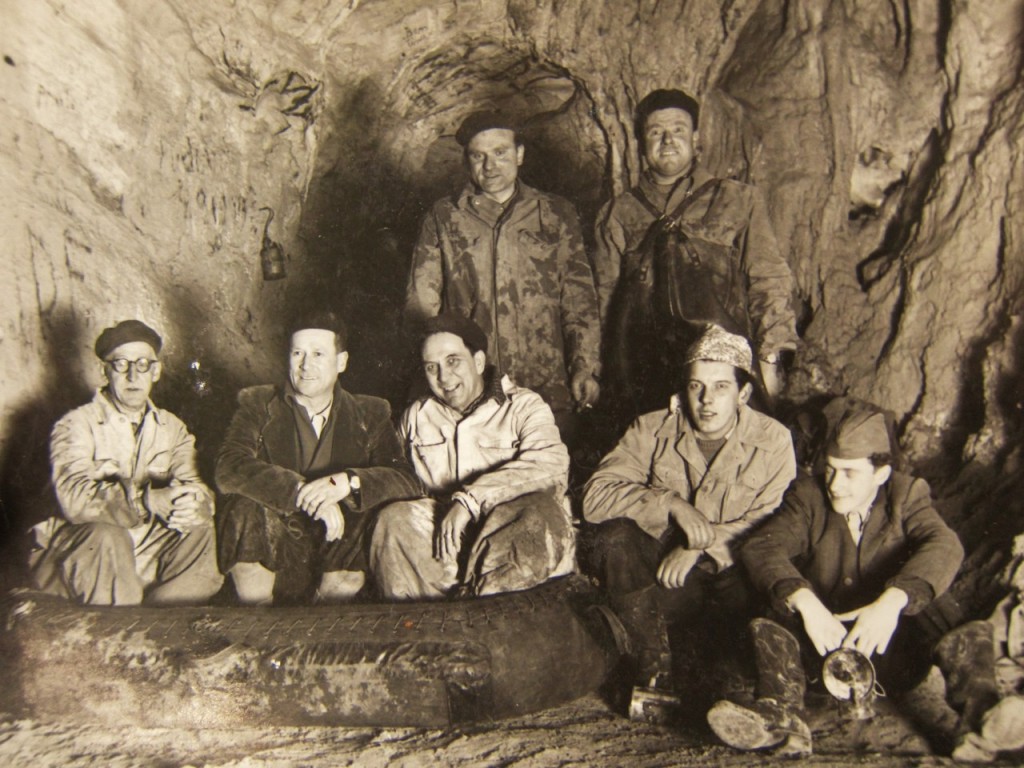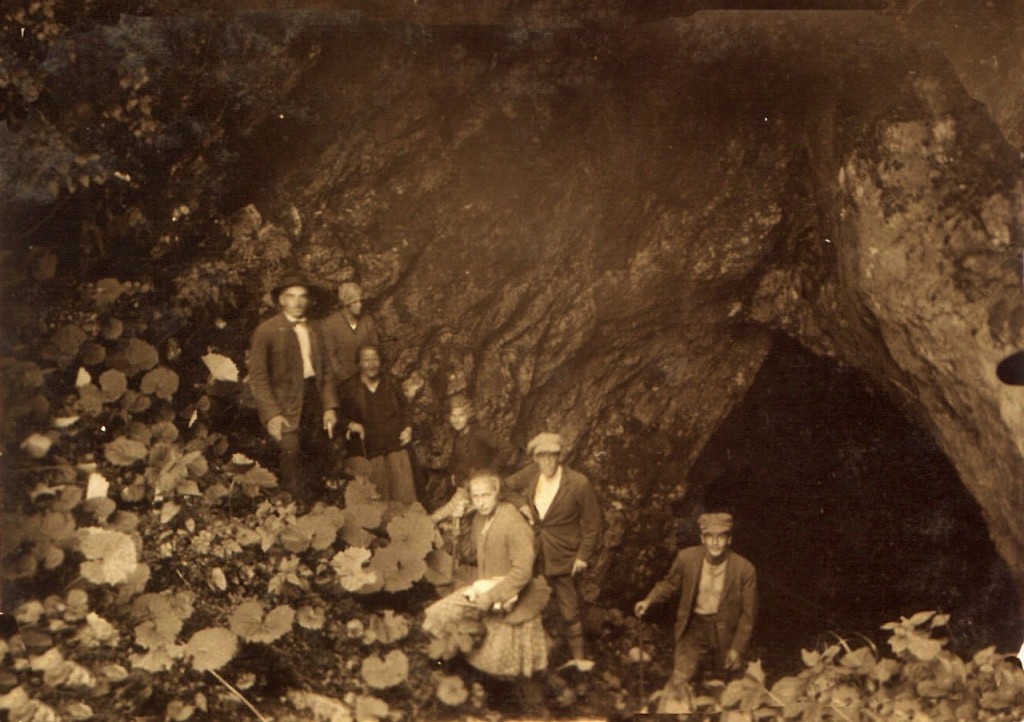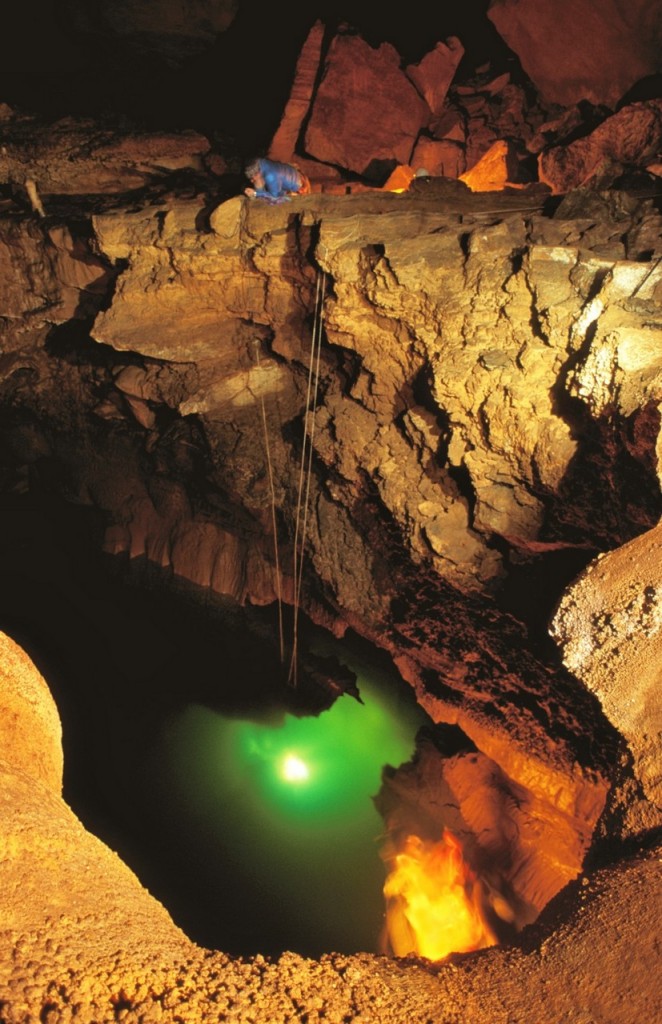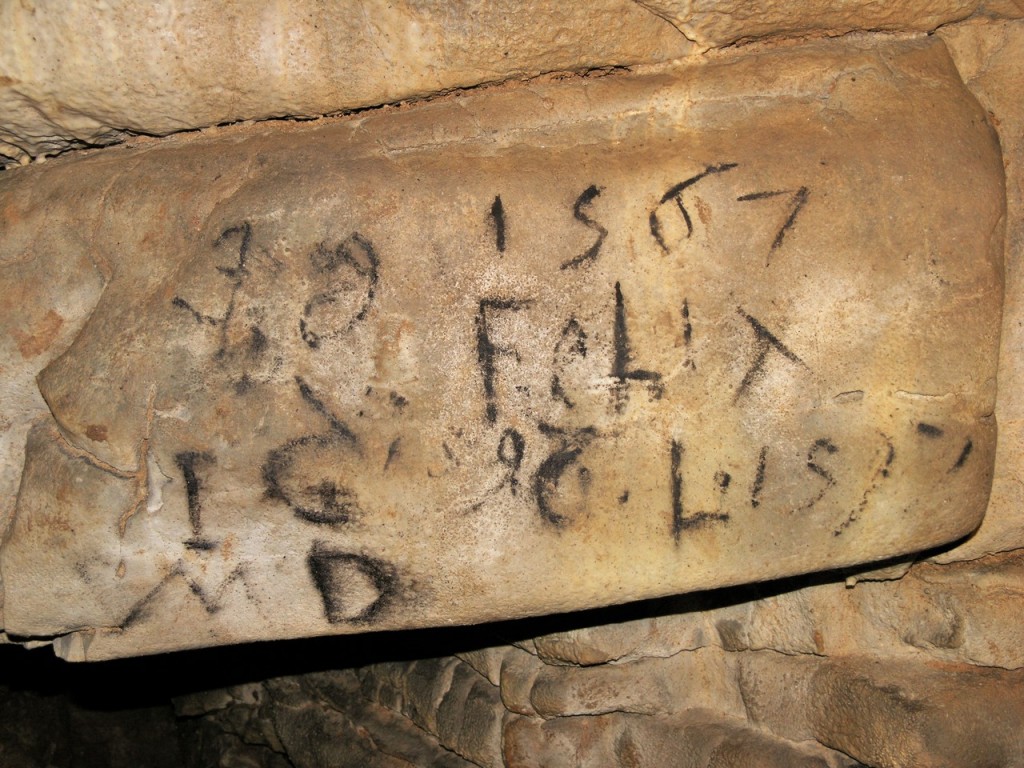The original name of the cave is the Cold cave in Lož (Mrzla jama pri Ložu). Synonims are also Cold cave under Križna mountain (Mrzla jama pod Križno goro), Križna cave, Old Križna cave. Today the cave is named after the church of Holy cross (Cerkev Svetega križa), which is on a nearby hill.
The first known visitors were people from metallic ages. The proof of their occupancy is archeological remains like pottery, the oldest of which is almost 5 thousand years old (Eneolithic, about 2800 B. C.) and was discovered in the water parts of the cave.
The beginning of tourism is strongly entangled with exploration – often we can even equate them. First written proof of cave visit was recorded in 1557.


In the following centuries the cave was constantly, but rarely visited. The most looked at were the entry areas as most of the people didn’t even reach the first lake. With the discovery of cave bear remains the amount of tourism rose but many remains were carried out of the cave.
The oldest known printed source about the cave is a report from J.J. Tobin, which was made in 1832. The first known description with an added sketch sources from the year 1838. Its author is J. Cerar, who knew the cave up to the first lake. The exploration was followed by Škoflic, Schmidl, Schulze and F. von Hochstetter, who created a plan and a detailed description of the first parts of the cave, and excavated over 2000 bones and bone pieces of cave bear – remains, which belonged to more than 100 bears.
The first lake wasn’t passed until 1962 by students of secondary school from Ljubljana Šiška under the guidance of professor Prezelj, who was born in Lož, and individual locals from the Loka valley and its surroundings.
The cave was researched and published before the second world war; by R. Badiura, B. Brinšek, I. Michler, P. Kunaver, F. Bar, R. Kenk, A. Kraševec, J. Kos and Bohinec.
Under the guidance of A. Šerk the crystal mountain was »conquered« by cavers in 1934. They also reached the final hall of the Pisani tunnel and discovered the Blatni tunnel.
Slovenian speleological society (DZRJS) produced a more detailed map of the cave and discovered its new parts (Mark’s tunnel and Tršanov’s tunnel) in 50’s, 60’s and 70’s of the 20th century.


The depth of the lakes and water flow and chemical properties of the water were measured. The cave was also photographed. During 1970 and 1990 the locals and cavers of different Slovenian and foreign clubs discovered new paths and halls of the cave and dove into the siphon of Kittlow wells (Kittlova brezna).
Between 1990 and 2003 the most active was Speleological society of Karlovec and the Assotiation of Križna cave lovers: they discovered new tunnels, cleaned the cave and photographed it.
In 2003 divers reached the depth of 70 meters in the 2nd Kittel’s well siphon.











